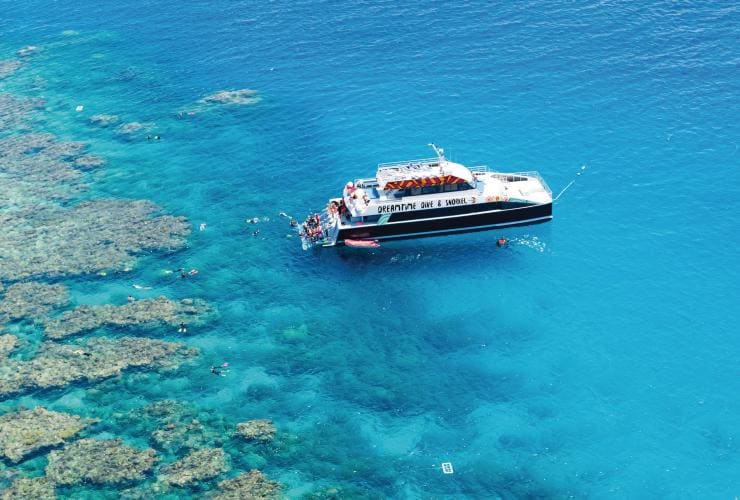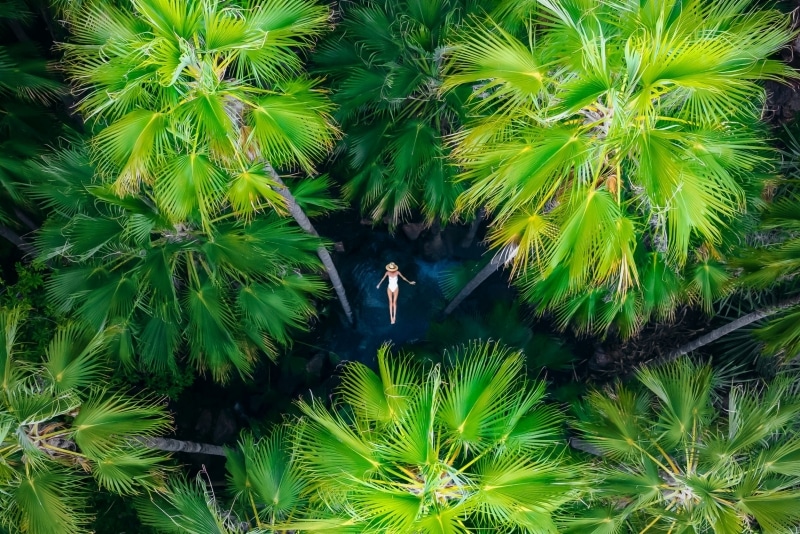Australia’s seasons
Australia is a country for all seasons. Visit at any time of year to find incredible experiences that will guarantee lasting memories.
Given the size of the country, the climate in Australia varies greatly from one region to the next. Generally speaking, there are four seasons across most of the country while the Top End (including Darwin, Katherine, Kakadu and Arnhem Land), Broome, the Kimberley and Tropical North Queensland (Cairns, the Whitsundays and the Daintree Rainforest) experience a ‘wet season’ (November to April) and a ‘dry season’ (May to October).
It’s also important to remember that Australia's seasons are at opposite times to those in the Northern Hemisphere. So if you’re chasing an endless summer, just head Down Under as things start to cool off in the Northern Hemisphere.
Summer: December - February

Duke of Orleans Bay, near Esperance, Western Australia © Tourism Western Australia
Summer in Australia falls between the months of December and February. It brings sunny, warm days that are best spent at one of the country’s gorgeous beaches. The tropical north is in the midst of its wet season (November to April), which brings heavy rains and tropical storms to Darwin, Broome, Cairns and the Whitsundays. It’s also stinger season on the Great Barrier Reef, meaning snorkellers and divers are required to wear full-body wetsuits. In the outback, daytime temperatures will soar. Head to the southern parts of the country to find the best weather. Learn to surf at Bondi, discover the white sand beaches of Esperance, kayak with pods of dolphins in Byron Bay or hike one of Tasmania’s many stunning trails.
Autumn: March - May

Nightingales Apple Orchards, Bright, High Country, Victoria © Visit Victoria
See the country transform from lush green to brilliant hues of orange, red, ochre and gold as the temperatures cool in autumn. It's particularly vibrant in Victoria's High Country, the Grampians and in Cradle Mountain-Lake St Clair National Park in Tasmania. It can still be wet and stormy in the tropical north, so aim for late in the season if you’re heading up there. Australia’s major cities put on a party in autumn with many of the biggest festivals taking place at this time. For a bit of wildlife magic, witness tiny turtles hatching in the Southern Great Barrier Reef. If you’re hoping for a beachy, tropical feel, spend a few days soaking up the sun and surf in the Gold Coast, Byron Bay or the Sunshine Coast.
Winter: June - August

Mount Hotham, Victoria © Visit Victoria
Widely known for its red outback and golden sand beaches, many visitors are surprised to learn that a white winter is common in Australia. The Australian Alps, in the south of the country, are home to great ski fields for winter sports and après enthusiasts. If you don’t like the cold, winter is the ideal time to visit the north, including Darwin, the Top End and the Kimberley. You’ll get balmy days and cooler evenings, ideal for getting outdoors and exploring the incredible natural landscapes of the region. Cairns and the Whitsundays have warm days, low humidity and excellent water temperature, perfect for discovering the Great Barrier Reef. It’s also whale watching season, so head out on a boat to spot magnificent humpbacks as they migrate north.
Spring: September - November

Macadamia the baby koala, Australia Zoo, Beerwah, Queensland © Ben Beaden, Australia Zoo
Australia’s spring is characterised by sunny days and cool nights. Jacarandas and wildflowers are in bloom, creating a spectacular display of colour in many of the country’s cities, such as Canberra and Sydney, as well as in regional areas around Perth. It’s also the time of year when koala and kangaroo joeys begin to venture out of their mothers’ pouches for the first time. Head to Australia Zoo on the Sunshine Coast to spot them. It’s a great time to take advantage of the cooler daytime temperatures in the outback and the last few months (September and October) of the Northern Territory’s dry season.
The 'wet season': November - April

Jim Jim Falls during wet season, Kakadu National Park, Northern Territory © Jarrad Seng
The wet season in Australia's north is characterised by very hot days, high humidity, monsoonal rains and possible cyclones, but it's not without its drawcards. Visit Katherine at the end of the wet season to see spectacular Nitmiluk Gorge at full flow. Many areas in Kakadu may be closed due to risks of flood, but you can still see the thundering waterfalls of the area on a scenic helicopter flight. In Tropical North Queensland, monsoon troughs and storms are more common, but it very rarely rains all day and you’ll usually enjoy sunny days with a storm in the afternoon or evening. The colours of the rainforest are at their brightest and the waterfalls are full and spectacular. The Great Barrier Reef is calm at this time of year, so it’s great for snorkelling and diving, although you do have to wear a wetsuit to protect from stingers.
The 'dry season': May - October

Dreamtime Dive and Snorkel, Great Barrier Reef, Queensland © Davey Houlton, Dreamtime Dive and Snorkel
Head to the Top End during the dry season for clear blue skies, warm days and cool nights. Many visitors find the best time to come is at the end of the wet season or beginning of the dry season, when everything is still lush and green. In Tropical North Queensland, the daily temperatures are lower, but still reach the high 20s (low 80s) and rarely drop below 17 degrees Celsius (62 degrees Fahrenheit). Rainfall is low and you can expect gorgeous sunny days, making it the most popular time to visit the region. The ocean is free of marine stingers during this time, so you can swim almost anywhere without nets or suits for protection.






























































































































